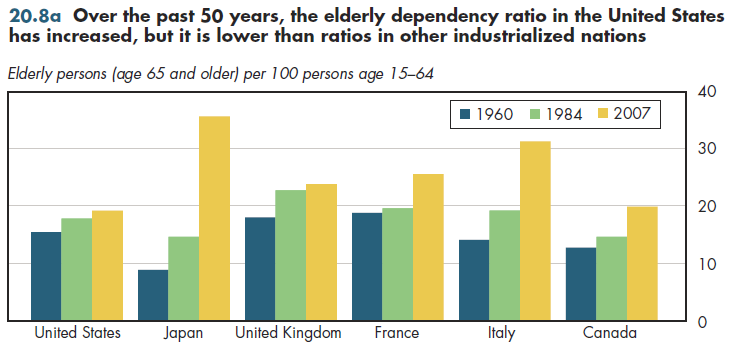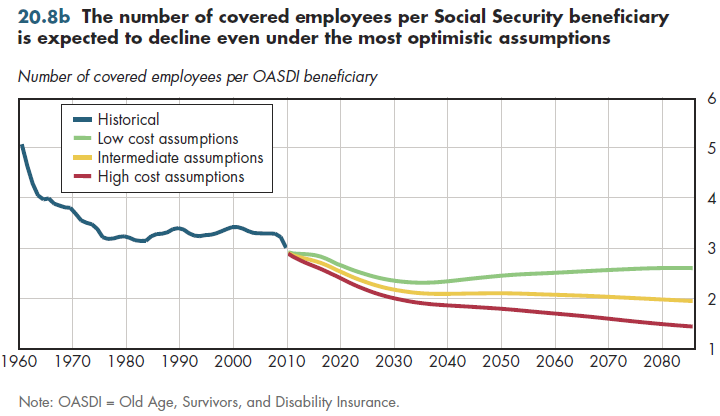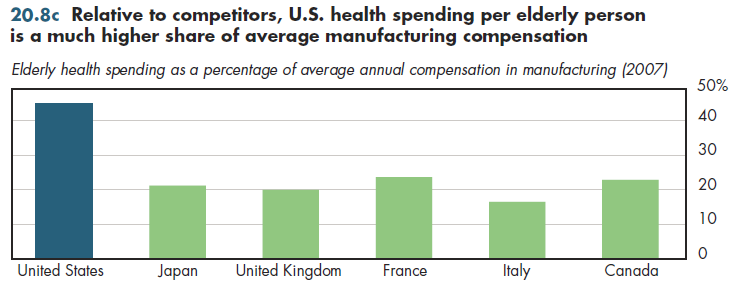The U.S. elderly-dependency ratio is much lower than in any other G7 nation, despite having risen during the past 50 years (figure 20.8a). The elderly-dependency ratio measures the number of people age 65 and older relative to a "working-age" population (those ages 15-64). The U.S. ratio is lower, and in almost all comparisons, it increased less rapidly over the past 25 years (absolutely and relatively) than among the nation's major competitors. Japan's ratio, for example, was less than the U.S. level in 1984, yet by 2007 was almost twice as high.

The OECD projects that this U.S. margin of advantage will persist through 2050, because all these countries will experience sharp rises in their dependency ratios. However, due to the "Baby Boomers," the U.S. ratio is expected to reach almost 45 in the year 2040 before declining to approximately 40 in 2050. Thus, the nation is doing better in relative terms, but it still must face the fiscal challenges posed by the dependency ratio more than doubling over the next few decades. In fact, the number of covered workers per Social Security beneficiary is expected to decline even under the most optimistic assumptions (figure 20.8b).

The U.S. demographic margin of advantage is offset considerably when differences in the relative burden of elderly health spending are taken into account. In the United States, per capita elderly health spending amounts to approximately 45 percent of the average annual compensation for manufacturing workers (figure 20.8c). In the rest of the G7, this fraction is approximately only half as much. Manufacturing compensation is considered a "good" wage in all countries, and standardized cross-national estimates of hourly compensation for such workers are readily available. Because U.S. manufacturing productivity is higher than in these other countries (contributing to its higher wages), this comparison should favor the United States. To observe such a large differential despite a comparison tilted in the nation's favor is quite striking. It implies that relative to a competitor, the United States could face a comparable burden of financing elderly health care even if its elderly-dependency ratio were only half as much.

Download PowerPoint versions of all figures.
- Boards of Trustees, Federal Hospital Insurance and Federal Supplementary Medical Insurance Trust Funds, The. 2010 Annual Report. US Government Printing Office. August 5, 2010.
- Organisation for Economic Co-operation and Development.












